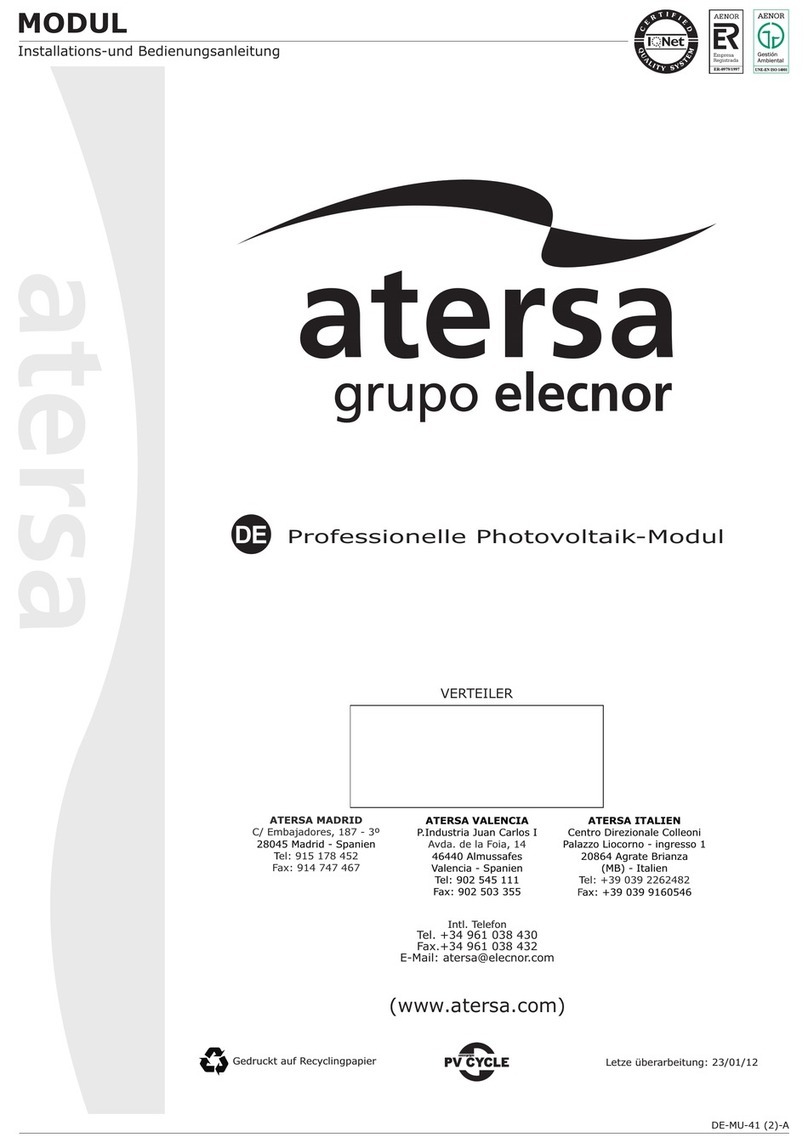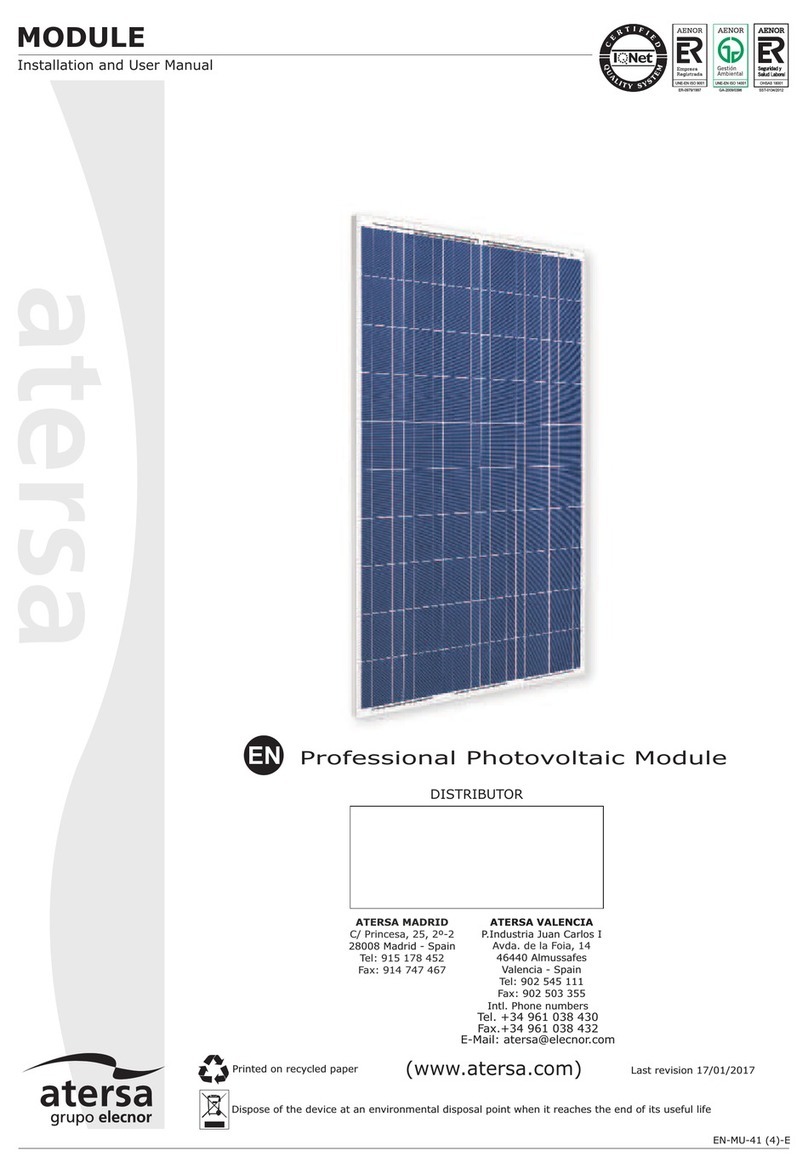
OPTIMUM GS MODULES INSTALLATION MANUAL
Page 3
Aplicaciones Técnicas de la Energía S.L. (ATERSA
www.atersa.com – atersa@elecnor.com
Madrid (Spain) +34 915 178 452 - Valencia (Spain) +34 961 038 430
1. Introduction
Thank you for choosing Atersa photovoltaic (PV) module It is the great honor to provide you
our PV modules This manual contains information regarding the installation and safe handling
of Atersa The word "module" or "PV module" used in this manual refers to one or more
GSE-Series solar modules Installers must read and understand the guide before installation
Any questions, please contact our sales department for further explanations The installer
should conform to all safety precautions in the guide and local codes when installing a module
Before installing a solar photovoltaic system, installers should become familiar with the
mechanical and electrical requirement for such a system Keep this guide in a safe place for
future reference (care and maintenance) and in case of sale or disposal of the modules
2. Disclaimer of Liability
Because the use of this manual and the conditions or methods of installation, operation, use
and maintenance of photovoltaic (PV) product are beyond Atersa’s control, Atersa does not
accept responsibility and expressly disclaims liability for loss, damage, or expense arising out
of or in any way connected with such installation, operation, use or maintenance
No responsibility is assumed by Atersa for any infringement of patents or other rights of third
parties, which may result from use of the PV product No license is granted by implication or
otherwise under any patent or patent rights
The information in this manual is based on Atersa’s knowledge and experience and is believed
to be reliable; but such information including product specification (without limitations) and
suggestions do not constitute a warranty, expresses or implied Atersa reserve the right to
change the manual, the PV produce, the specifications, or product information sheets without
prior notice
Warning:
Read this instruction sheet in its entirety before installing, wiring, or
using this product in any way. Failure to comply with these instructions will
invalidate the Atersa Warranty for P Modules.
In summary, the Limited Warranties do not apply to any of the following:
PV modules which in Atersa's absolute judgment have been subjected to: misuse, abuse,
neglect or accident; alteration, improper installation, application or removal (including but not
limited to installation, application or removal by any party other than a Atersa authorized
dealer); non-observance of Atersa's installation, users and/or maintenance instructions;
repair or modifications by someone other than an approved service technician of Atersa;
power failure surges, lightning, flood, fire, accidental breakage or other events outside
Atersa's control





























